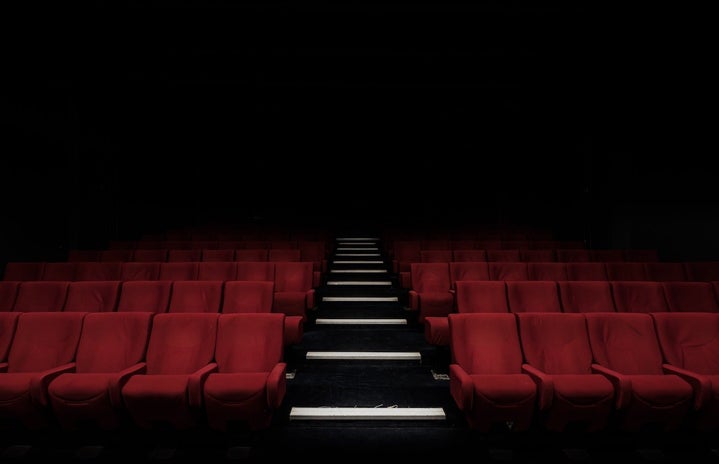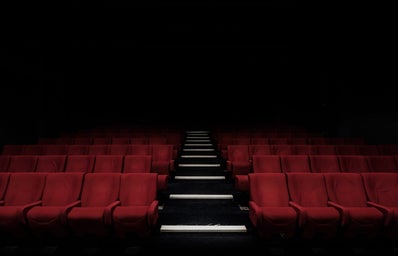Warning: This article contains discussions of police violence and anti-blackness, as well as major spoilers for Queen & Slim (2019).
Between Little Women, Bad Education, Midsommar, and Hustlers, among many others, 2019 was a big year for movies. One of the most anticipated films was Melina Matsoukas’s romance crime drama, Queen & Slim. Lena Waithe, the film’s screenwriter, described the movie as an observation of the Black community’s resilience in an interview with NPR, calling it “a hug [she] wanted to give Black people.”
With all respect to Ms. Waithe, it felt more like a punch in the stomach.
Queen & Slim follows our two protagonists’ journey, known to us only as Queen and Slim, after an ill-fated traffic stop where Slim kills a police officer in self-defense. The two immediately decide to go on the run and escape to Cuba; what follows is a high-stakes, cross-country voyage, a melancholy take on Bonnie and Clyde.
Though they’re supposedly on the run, the two seem to take every chance they can to slow down or leave tracks. They stop to dance. They stop for gas. They kidnap a cop (one nasty run-in wasn’t enough, I suppose). They stop to eat and chat with locals. They hit a man with their car and take him to a hospital. They stop for gas again. And again. And maybe one more time, just for good measure. They stop to fix their car, pose for a polaroid picture and, have sex. They go horseback riding (I wish I were joking). They re-enact the car scene from Perks of Being a Wallflower (2012). If I’d missed the opening scene, I’d think they were on a regular road trip with all the roadside attractions they managed to visit.
Dishonorable mention #1: The sex scene, I won’t say any more.
For a two hour and ten-minute movie, the ending of Queen & Slim is still somehow rushed. Having spent an hour and a half meandering aimlessly through middle America, we– and our protagonists– suddenly find ourselves at the movie’s end. And what an ending: another Black man sells out our two Black protagonists moments from their escape. In a last-second attempt to wring emotion from their stunted relationship, Queen turns to Slim to ask if she can be his “legacy,” a callback to an earlier moment in the film. A bullet sent through her heart by a trigger-happy police woman, cuts the tender moment short, while Slim tries to respond. Heartbroken, he gathers Queen in his arms and begins to walk toward the police blockade. They open fire, riddling his body with bullets and leaving our two protagonists as an image all too familiar: dark bodies on dark pavement, an ever-growing halo of dark blood spreading outward.
Dishonorable mention #2: The film’s weird focus on Black on Black crime and betrayal (especially within family units) suggests that Black people are the cause of their oppression.
It’s not all bad, however. Queen & Slim has some excellent cinematography if a little repetitive. There are beautiful shots of the landscapes encountered on their road odyssey and some evocative moments of juxtaposition. The soundtrack is impressive; between Vince Staples, Ms. Lauryn Hill, Megan Thee Stallion, and Burna Boy, you’ll never get over the back-to-back bangers. The performances of the leads, Daniel Kaluuya and Jodie Turner-Smith, are compelling. The scene with Slim’s father and his tapped phone was heart-wrenching. The premise was promising. Queen & Slim had all the pieces to make a superb film– so what happened?
I think, in short, that Queen & Slim suffered from a lack of anything to say. The movie doesn’t get into any themes that we haven’t seen explored before (and better). It seems to suggest that Blackness in America is an endless race, a fruitless pursuit of freedom and safety. Our protagonists are violently killed, and viewers are supposed to feel some sense of relief that they had a mural put up in their honor? From the film’s onset, we knew that there was no happiness in store for them, even in death. Their loved ones and communities are unhappy. I was sad at the end of the film. But what did we learn?
This criticism isn’t to say that movies cannot have tragic endings; it is to say that films cannot have unearned sad endings. What did this tragedy teach us? What did it influence the characters in the movie? Queen & Slim’s message seems that life is hard if you’re Black, and then you die. If you’re lucky, you get a mural. If you’re not, you get villainized in the media. The movie left me feeling frustrated, angry, and overall disappointed.
I called my brother after viewing to voice my frustrations. When I told him I would rather have had a sort of “Black Bonnie and Clyde” story, he asked why I would prefer them to be unremorseful criminals. “At least then, they’d be having fun,” I replied. “And I could’ve spent two hours watching people who looked like me having fun.”
Instead, I spent two hours watching two dark-skinned Black people have a terrible time, with a few moments of fun. When the film ended, I saw my reflection in the dim screen: yet another dark-skinned Black person who had just spent two hours having a bad time.
I encourage you to watch the movie for yourself and form your own opinions. Queen & Slim is currently available on HBO Max, Hulu Premium, and Amazon Prime Video Premium. You can also listen to the soundtrack– I encourage that option a bit more.



